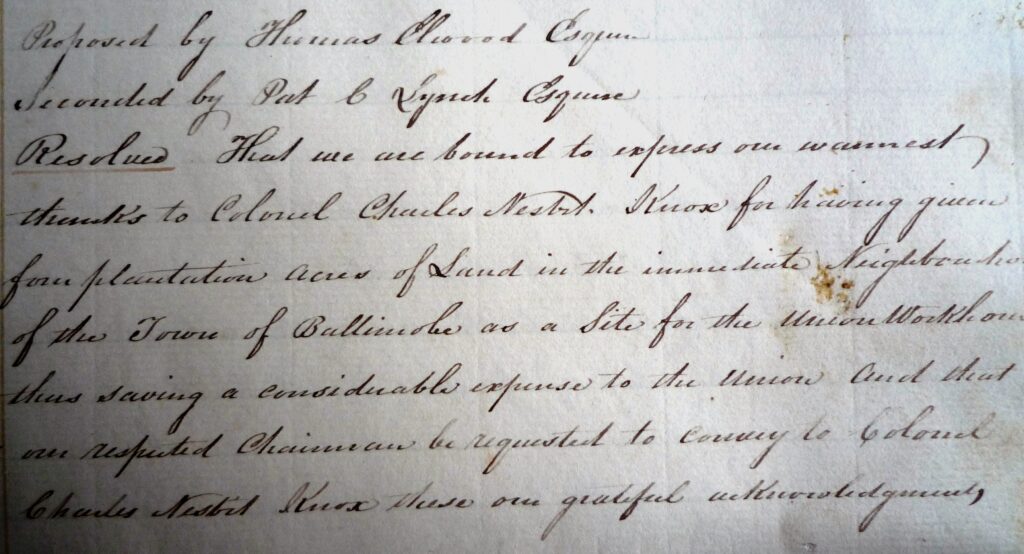Who built the Workhouse?
By Averil Staunton
Closely modelled on the English Poor Law Union of 1834, an Irish enactment was passed in 1837 with The Irish Poor Law Commissioners giving power to an elected Boards of Guardians, to build Ballinrobe Union Workhouse (BUW).
Colonel Charles Knox (1817-1867), the local landlord, donated 4 plantation acres for construction of the Workhouse. This was a considerable saving for the Union and thanks was duly expressed to Colonel Knox at the first board meeting.
The architect for the Ballinrobe Workhouse was George Wilkinson (1814-90); an Englishman, born in Oxfordshire from a builder-architect family. He was appointed by the Irish Poor Law Commissioners to design and supervise an ambitious programme of workhouse construction in Ireland.
He designed Ballinrobe Workhouse for 800 paupers. The exterior had more ornamentation, perhaps reflecting the beginnings of a more humane attitude towards the paupers and the growth of civic pride. A decorated door entrance was common, however the interior finish was another story being plain cold unplastered stonework. These walls would be white-washed by the paupers. Stone steps led to the upper storeys.
Mr Pat Browne was appointed contractor for the work with Mr John Ellis, Clerk of the Works. Members of the Lardner family were the master stonemasons for the building (1st minute book of Ballinrobe Union).
